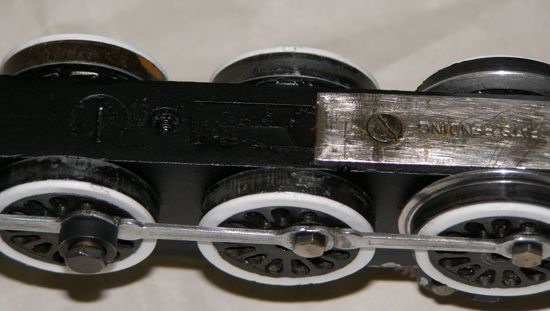
|
Atlantic Coast S Gaugers - ACSG
"Promoting S Gauge along the East Coast" |

|

|
Atlantic Coast S Gaugers - ACSG
"Promoting S Gauge along the East Coast" |

|
Pennsylvania M1 4-8-2
A running board had to be added above the air compressor on the left and the relocated power reverse and air reservoir on the right. I also added the exposed steam pipes on each side going to the cylinders. The K-5 had a cast frame and cylinder saddle that included the steam pipes internally.
Several different tenders were associated with this locomotive, including the type Gilbert modeled for the K-5. However, I thought I would try to model the big coast-to-coast tenders the Pennsy developed. To make this tender I had to cut up two Gilbert K-5 tenders. The final tender is pieced together from five pieces. I also added some skirting to make the tender look bulkier. The six-wheel trucks are from American Models.


I also had to make an exposed dry pipe for the top of the firebox. The real locomotives had this feature on the M1.
The tender had the water tank and the coal bin both extended by about an inch and a half each. I used plaster to make the coal pile look smooth then added scale coal after the tender was painted and lettered.
The handrails on the real locomotive were not straight but were higher in the middle sections where the running boards were raised above the pumps and power reverse.




The copper pipe holds the pieces of cast boiler in place and lined up.






You can see the five sections used to assemble the tender. The skirting used to give the tender bulk has not yet been installed. The white stuff in the coal bin is the plaster I used to give the appearance of a uniform coal pile. It was later sanded, painted and had scale coal glued on it.

